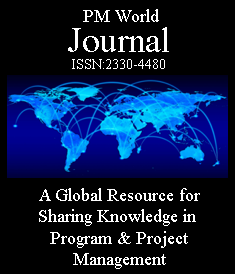for Implementing Benefits Management
Implementing BS202002: Benefits management on
portfolios, programmes and projects
SERIES ARTICLE
By Dr. Hugo Minney
United Kingdom

Figure 1 The portfolio manager uses a variety of tools to keep the team together and ensure the organisation is successful
Abstract
This paper, the 15th in our series on benefits management best practices, examines how structured documentation and digital tools support effective end-to-end benefits management across portfolios, programmes, and projects. By aligning with BS 202002 standards, organisations of all sizes and commercial sectors can establish consistent approaches to identify, plan, track, and realise benefits that contribute directly to strategic objectives and lead to organisational success.
We explore the cyclical portfolio benefits management process and its connection to individual projects and programmes, detailing the essential documentation required at each stage and how modern digital tools enhance these processes. Key focus areas include benefits mapping techniques, stakeholder engagement, and performance measurement. The paper concludes with practical implementation guidance to help organisations deploy these tools to enhance their Benefits Management capabilities, regardless of their current maturity level.
For project management professionals seeking to maximise the strategic value of change initiatives, this paper provides a comprehensive framework blending theoretical principles with practical application.
Introduction: The Strategic Imperative of Benefits Management
Success is not achieved project by project, but through the collective and combined benefits that projects deliver to the organisation or portfolio[1]. As BS 202002 recommends [1], portfolios provide a mechanism for addressing forecast underperformance or gaps in specific project benefits by changing the composition of the portfolio. This portfolio-level focus ensures the organisation stays on track to meet its goals, even when individual projects face challenges.
Many organisations establish a Portfolio Management Office (PMO) to consolidate progress reports and forecast benefits across all projects and report them centrally. Tools such as Amplify-now, Wovex, and other enterprise reporting platforms help maintain corporate dashboards that track portfolio performance in real time. These tools align with the best practice recommendations in BS 202002 for monitoring the portfolio lifecycle and adjusting it to close gaps between required and forecast performance [2].
In this article, we explore the systematic documentation and digital tools required to implement effective end-to-end Benefits Management. We begin by examining the portfolio benefits management cycle before exploring how it connects to programme and project lifecycles, where specific documentation supports Benefits Management during each phase. The paper offers practical guidance for project professionals seeking to enhance their organisation’s approach to measuring, tracking, and realising benefits that align with strategic objectives.
More…
To read entire report, click here
Editor’s note: The author Dr. Hugo Minney is a Fellow of APM (Association for Project Management), a Member of PMI and PMI UK, Co-Chair of APM’s Benefits and Value SIG, and committee member of PMI UK’s Sustainability Community of Action. For more, see his author profile at the end of this article.
How to cite this work: Minney, H. (2025). Structured Documentation and Tools for Implementing Benefits Management, Implementing BS202002: Benefits management on portfolios, programmes and projects, series article, PM World Journal, Volume XIV, Issue V, May. Available online at https://pmworldlibrary.net/wp-content/uploads/2025/05/pmwj152-May2025-Minney-Structured-Documentation-and-tools-for-Benefits-Management.pdf
About the Author

Dr Hugo Minney
London, UK
![]()
Dr. Hugo Minney is a Fellow of APM (Association for Project Management), a Member of PMI and PMI UK, Co-Chair of APM’s Benefits and Value SIG and committee member of PMI UK’s Sustainability Community of Action (none of which are paid).
Minney set out to become a farmer but was defeated by bureaucracy. He sold high ticket computer systems and specialist software for workforce planning; joined the National Health Service for 18 years (and as a Chief Executive for the last 7 of these) and is now a project management consultant with a sideline chairing a charity restoring the sense of community for young people.
Minney works in project management, and in particular benefits management, motivating team members by reporting what they are achieving together and changing the community and culture to want to achieve – together. At present, he’s more involved on the governance side, accredited as a Social Value practitioner and Chartered Project Professional, and reviewing the balance of projects and contribution to objectives and benefits across portfolios.
Dr. Minney can be contacted at hugo.minney@thesocialreturnco.org
To view previous works by Hugo Minney, visit his author showcase in the PM World Library at https://pmworldlibrary.net/authors/dr-hugo-minney/
[1] A portfolio is a convenient way of describing the change activities of an organisation or part of an organisation, and the term can also be applied to activities common to a group of organisations. Your organisation might not use the term “portfolio” formally, but we use the term portfolio to describe the principles for managing projects to deliver success for an organisation.









